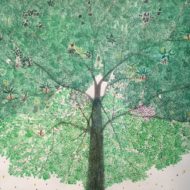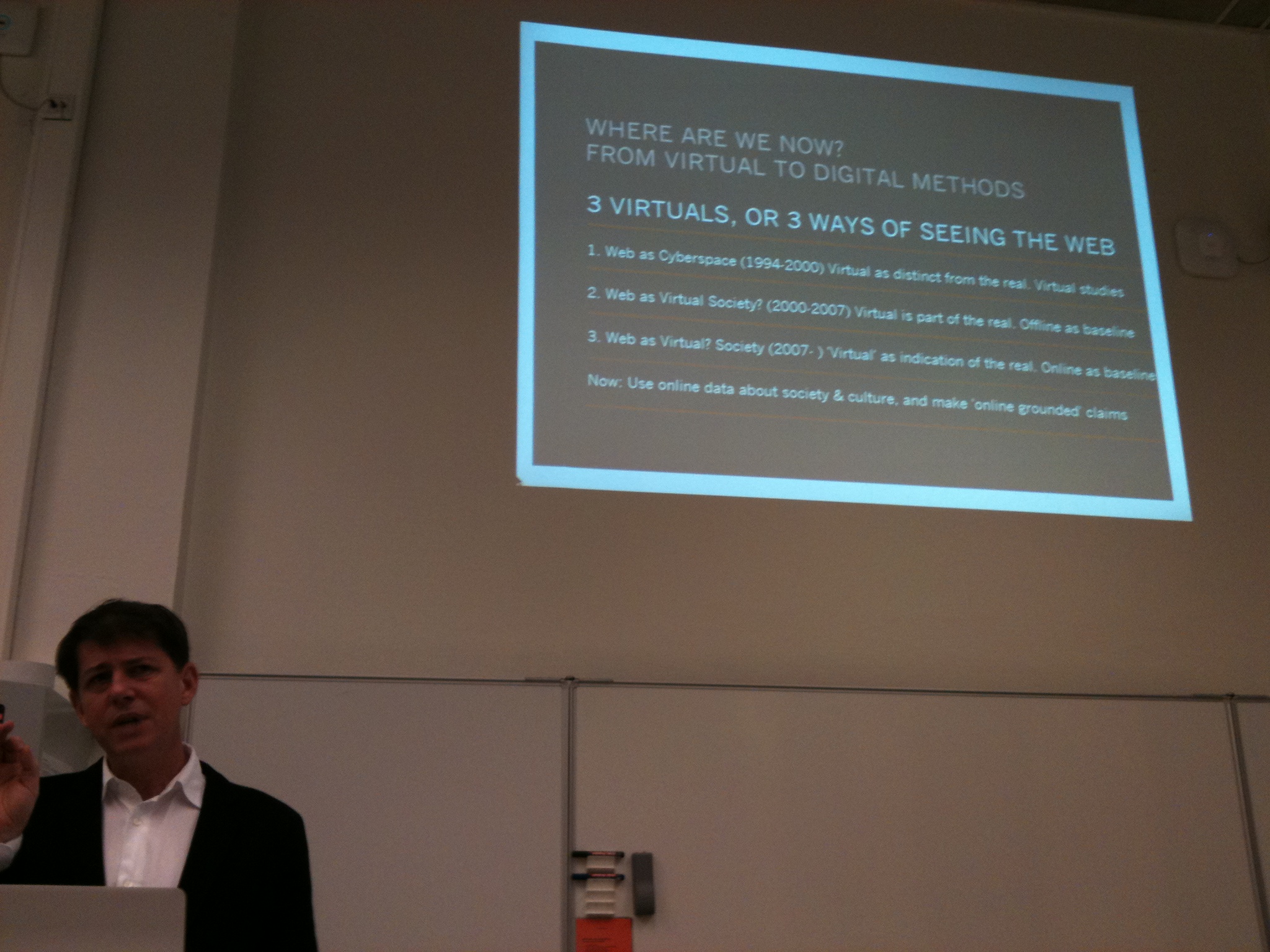This morning I attended the first lecture of the Digital Methods for Internet Research course at the University of Amsterdam. Richard Rogers, chair and professor in the university’s New Media & Digital Culture programme, introduced three stages of seeing the Web or of doing Internet research that we have witnessed so far.
1. The Web as cyberspace (1994-2000)
Around 1994 the Web was conceptualized as cyberspace, a realm apart where people could leave their real identities behind and assume identities separate from their real ones.
2. The Web as virtual society (2000-2007)
Around 1999 a second phase of understanding the Internet emerged. In this phase researchers focused on debunking the myth of the cyberspace, of the Internet as a realm apart. The UK based Virtual Society? program did important work in this respect by conducting empirical studies about Internet users. Some by now classic theories came out of this research tradition, such as the digital divide critique, which showed that online access is not equally distributed. With respect to the relationship between the real and the virtual, researchers showed that online interactions don’t lead to isolation but that they stimulate more real interaction. The Virtual Society? programme introduced social sciences methods to the study of the Internet: surveys and field observations.
3. The Web as the baseline for the real (2007 -)
The third stage according to Rogers marks a shift from using the Web to study online culture to studying society and culture with the Web. In this third phase Rogers introduces the concept of digital methods. In this programme which Rogers initiated around 2007 Web-based tools which exploit the specificity of natively digital objects and devices (links, tags, spheres, search engines, websites) are used to analyze accounts of reality in its various cultural, societal and political forms. There are two shifts in this research program compared to the previous two phases of Internet research that Rogers indentifies. The first shift is methodological. In contrast with the digitized methods used by the Virtual Society? program, which were imported from the social sciences and the humanities to conduct empirical studies of Internet users, Rogers proposes a set of digital methods that follow the medium and appropriate its natively digital objects such as the link or the website, as well as recommender systems and search engines. The second shift concerns the status given to the Web in this research program. Whereas in previous phases the Internet was an object for the study of online culture, in the digital methods program online dynamics become a dataset studied to make claims not only about online culture but about culture and society at large, thus moving beyond the divide between the real and the virtual that was the focus of the second phase of Internet research. Whereas virtual methods studies relied on non-Web data to support Web studies, with digital methods the relation between the online and the ground is reversed, the online becoming the baseline against which societal conditions can be assessed, for which Rogers proposes the term “online groundedness.”
Rogers documents this research programme in a booklet published by the Amsterdam University Press called “The end of the virtual. Digital Methods.” You can freely download it here. This programme generated 57 (!) tools for Internet research on top of devices such as Wikipedia, YouTube, Google search, Twitter and others. You can find them listed here.
Some of the projects undertaken by the Digital Methods Initative:
- National Web Studies: Mapping Iran online
- How the Climate Change Skeptics Got Organized
- Issue Animals
You can find the full list of projects here.

